Table of contents of the article
Toggle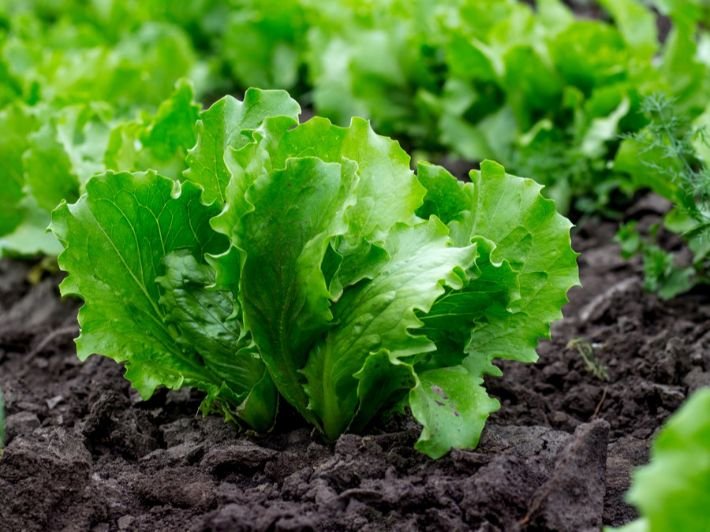
Lettuce is a popular leafy vegetable that adds a distinctive flavor and high nutritional value to salads and various dishes. In this article on your website, WORLD OF PLANTS, we will introduce lettuce, then we will explain how to grow it, its types, care for it, and many other important matters.
Introduction to lettuce
Lettuce is an annual plant of the Aster family. It is considered a major source of vitamins K and A. It can contain rhizomes or fibrous root systems. It has a short stem with larger leaves arranged at the bottom and gradually becoming smaller at the top of the stem. The colors of its leaves vary from shades of green to green. Dark red and purple, it is dense and may be smooth or wrinkled. Types of lettuce vary greatly in size, shape and type of leaf, as it grows to a height of 30-100 cm, and usually grows annually.
Methods of growing lettuce
Below are the steps for growing lettuce:
- To grow lettuce, the site must provide at least 6-8 hours of direct sunlight. The fast-growing type of loose lettuce can be grown in a partial shade area that provides 3-4 hours of sunlight.
- You can grow lettuce plants in containers at least 4-10 inches deep; Because its root system is shallow, it must have drainage holes.
- Make sure that the soil pH level is 6.0-7.0, and that it is mixed with new or old organic fertilizer.
- Sprinkle the seeds at a distance of 3 cm, and cover them with a thin layer of soil mix.
- After that, sprinkle a small amount of water to moisten the soil, taking care not to get it wet.
- To get a jump start on lettuce growth, cover the planting site with a tarp or plastic bag; This is because it retains sunlight and protects the plant from cold temperatures and frost.
- Lettuce usually takes 7-10 days to germinate, after which it will turn into small seedlings with about 2-3 small leaves.
Factors that help lettuce grow
Here are the most important factors that help in growing lettuce:
- Light: Lettuce needs sunny places where it receives 6 hours of sunlight daily.
- Fertilizer: The soil must be rich in compost or organic fertilizer, as it is a crop that can tolerate excess nitrogen.
- Temperature and humidity: Lettuce grows best in environments with temperatures ranging between 7.2-24 degrees Celsius, as hot weather makes lettuce leaves taste bitter.
- Spacing: The spacing between lettuce crops leads to an increase in the size of the lettuce and increases crop production.
The most suitable species for home cultivation
Here are some types of lettuce that are suitable for home cultivation:
- Romaine lettuce: It is in the form of long, narrow bundles, reaching a length of 50.8 cm, and it can grow in warm summers without burning.
- Butter lettuce: Also known as Boston lettuce, its leaves are crisp and thin, and it has different types. Which tolerate heat and can be grown in summer, in addition to cold-tolerant varieties.
- Green and red lettuce: Its size is small, and its leaves are large, loose, long, and wavy with wrinkled edges. It contains large amounts of vitamins A, K, potassium, and iron, in addition to antioxidants.
- Loose-leaf lettuce: It is one of the simplest and easiest types of lettuce to grow in home gardens, as it forms a compact head and is a source of vitamin A.
Water the lettuce
Lettuce irrigation times
Lettuce plants need to be kept properly moist, so you should water them when the top of the soil is dry, and you may need to water once a day or more often if the weather is hot and dry.
Methods of watering lettuce
The most appropriate method used to irrigate lettuce plants is the drip irrigation method. Because excessive watering leads to suffocation of the roots and reduces the weight of the shoots, and with a lack of water, lettuce enters the vegetative stopping point, and leads to infections and necrosis in the plant.
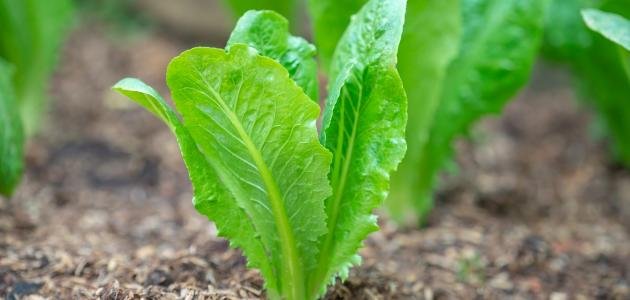
Amount of watering lettuce
Because the depth of the roots does not exceed 300 mm, the percentage of water must be small. An increase in the amounts of water used in irrigation will cause the loss of nutrients in the soil, so the appropriate amount of water for sandy soil is about 18 mm, and for heavy clay soil is about 50 mm, and irrigation must be done regularly. Frequently and in small quantities.
Other information about growing lettuce
First: How to extract lettuce seeds and prepare them for planting
Here is how to plant and extract lettuce seeds:
- Seeds are found in a plant inside the flower or fall to the ground next to the plant.
- Lettuce seeds do not require much to plant, as they are very small and only need a suitable depth and planting directly.
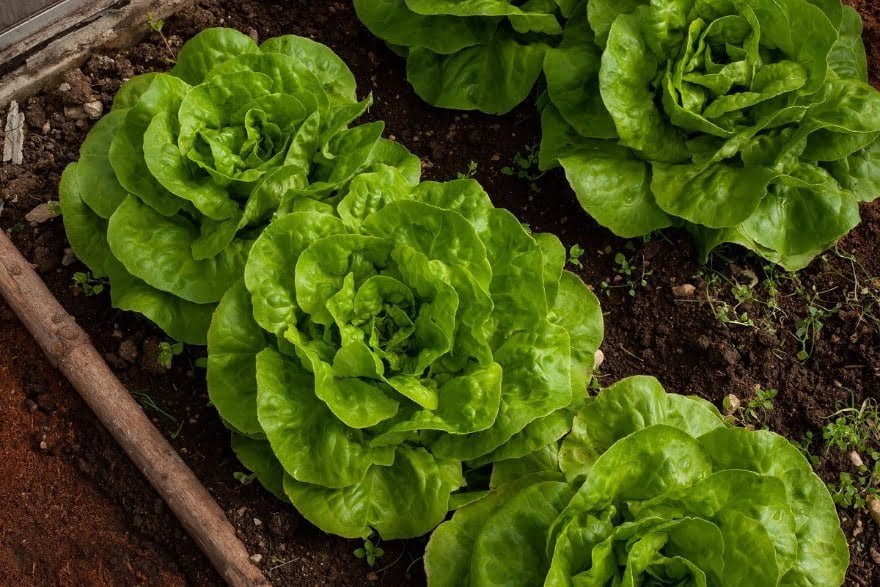
Second: The most appropriate times for planting lettuce
Lettuce is considered a crop that requires cold weather, so the most appropriate time to plant it is in the fall and winter, as lettuce seeds germinate at temperatures as low as 4 degrees Celsius, but the ideal temperature for it is between 16-18 degrees Celsius.
Third: Soil characteristics suitable for growing lettuce
It is preferable to plant lettuce in fertile soil that is rich in organic matter. It is also preferable for it to be well-drained because lettuce does not need a lot of water, and for the soil acidity to be between 6.2-6.8.
Fourth: Fertilizers that stimulate lettuce growth
If the soil is full of organic matter, it does not need fertilization. Nitrogen-rich fertilizers are important because they maintain the growth and production of lettuce regularly. Fish emulsion is an ideal organic fertilizer for lettuce. Add half the recommended amount of fish emulsion every two weeks, and it is best to apply the diluted type of it. Directly on the soil, for healthy growth of lettuce plants, the percentage of nitrogen must be 4.5%, phosphorus 0.5%, potassium 5%, calcium 0.5%, and magnesium 0.3%.
Diseases that may affect lettuce plants and their treatment
The following are the most important diseases that affect lettuce:
- Anthracosis: It initially causes small, water-soaked spots to appear on the outer leaves, less than 3 mm in size. Then the spots develop and enlarge, especially on the underside of the leaves, and turn yellow. In cold and humid conditions, white fungal spores may appear. The development of the disease leads to the killing of the leaves, and in some cases it leads to the plant being stunted. To prevent it, avoid planting in early spring, and alternate planting lettuce with other plants.
- Lettuce drop disease: It leads to a reduction in the growth of lettuce in coastal areas, as it affects only the leaves and stems that touch the soil, and a small fungus about 3 mm in size will cause soft, brown decay that ultimately leads to the destruction of the crown tissues of the plants, and thus causes it to wilt, and to prevent it, it is necessary to alternate planting Lettuce with other crops, avoid excess moisture in the soil by improving drainage, removing all infected plants, and using fungicides.
- Powdery mildew disease: It is a fungal growth in the form of a powder. It forms on the lower and upper parts of old leaves. The color of the leaves turns yellow or brown. The growth of the disease is stimulated by humid climates, and it can spread over long distances via the wind. To control it, use sulfur when symptoms appear. First, keep temperatures high enough.
- Septoria leaf spot: It is a fungal disease that appears in the form of small, irregular yellow spots and holes on older leaves, causing them to swell and turn brown. If the disease becomes severe, large necrotic spots will form and cause the leaves to wilt and the plant to die. The disease spreads in wet conditions or through Spraying water, and to prevent it, use seeds free of pathogens, plant in locations where there is low rainfall, and treat the seeds with hot water.
- Big Lettuce Virus: It is a viral disease that causes the veins to swell and become transparent, as its leaves become wrinkled. The virus is transmitted through the soil and transmitted to plants through fungi. It is more widespread in cold weather, and the best way to control it is to plant resistant varieties.
How to harvest lettuce
Harvesting loose-leaf lettuce is different from harvesting head lettuce. The loose leaves can be cut off as they grow rather than waiting for the core or head to grow. When the outer leaves are about 10.2 cm long, you can cut the leaves using scissors or with your hands at a height of 1 inch from the crown of the lettuce plant. Avoid touching the inner leaves when harvesting, as they will grow into outer leaves and will be ready to harvest after 10 days. Be careful when removing the leaves so as not to tear them, cut the crown, or damage the base. Because this leads to hindering plant growth.
Lettuce care tips
Here are the most important tips for caring for lettuce plants:
- Organic mulch and weed suppression help keep the soil moist and cool.
- Fertilize the lettuce plant three weeks after planting to provide it with organic matter, and a constant supply must be maintained if the lettuce is growing quickly.
- To increase lettuce production, plant seeds in raised beds; Because its temperature will rise faster than the surrounding land.
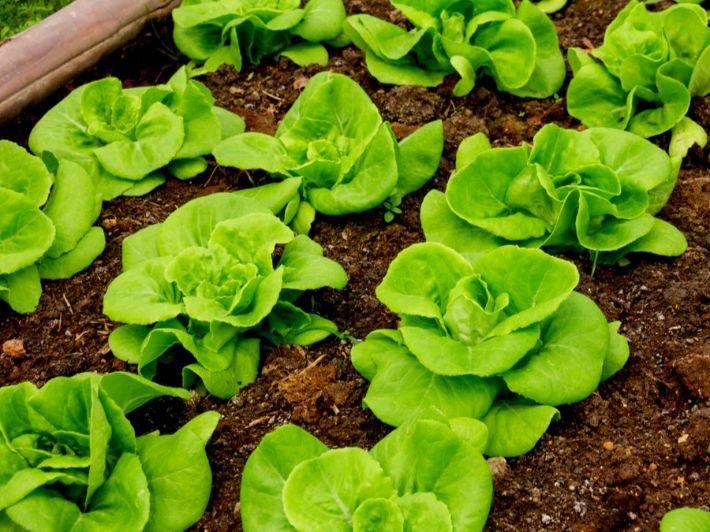
Lettuce harvest
As a general rule, lettuce can take 65 to 130 days to grow from seed to harvest (depending on variety). In most cases lettuce can be harvested between 30 and 70 days after planting. The right time to harvest depends not only on the different types of lettuce, but also on the local conditions of the lettuce (weather, planting distances, preferred stem weight, fertilization, etc.).
Important things when harvesting lettuce:
- It is recommended to avoid harvesting plants that are too mature. Their leaves have a bitter taste, so it is preferable to harvest lettuce when it is young, before maturity.
- Lettuce leaves can be harvested by removing the outer leaves, so, the inner leaves (near the center of the plant) can continue to grow.
- We should regularly check the field and look for plants ready to harvest.
- The ideal time to harvest lettuce is early in the morning before sunrise. According to some lettuce growers, this time of day is ideal, because the lettuce will not be exposed to intense sunlight.
- After harvest, farmers store lettuce in a cool but not too cold place.
Lettuce yield per hectare
The average lettuce yield per hectare is 20-40 tons. (1 ton = 1000 kg = 2200 lbs). (1 hectare = 2.47 acres = 10,000 square meters). Experienced lettuce growers in areas with a suitable climate can harvest between 20 and 40 tons per hectare multiplied by 2-4 harvests per year. Of course, such high lettuce yields can be achieved by experienced farmers after several years of practice.
In conclusion, we would like to note that we, at the world of plants website, offer you all the necessary services in the world of plants, we provide all farmers and those interested in plants with three main services::-
- Artificial intelligence consulting service to help you identify diseases that affect plants and how to deal with them.
- Blog about plants, plant diseases and care of various crops ... You are currently browsing one of her articles right now.
- An application that provides agricultural consultations to clients, as well as a service for imaging diseases and knowing their treatment for free – Click to download the Android version from Google Play Store، Click to download the IOS version from the Apple App Store.
References




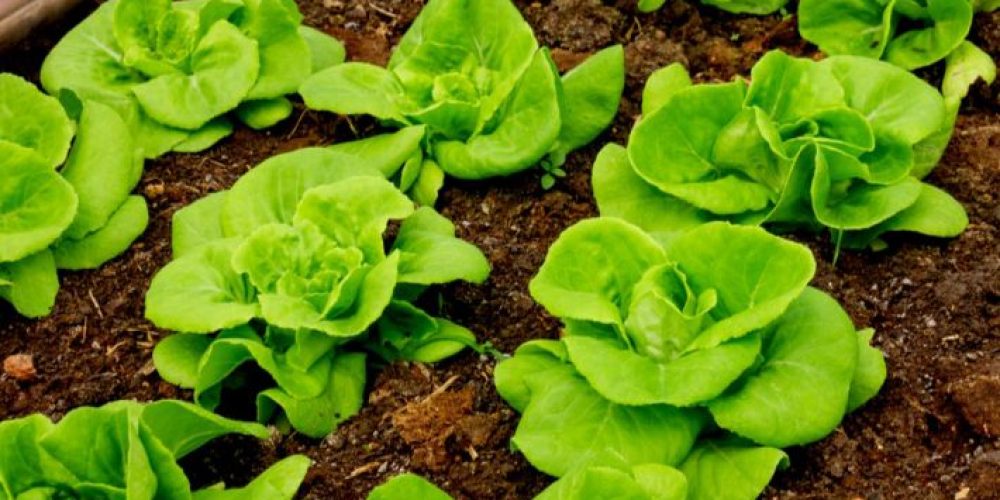
1 Comment
سلام عليكم اللهم صل وسلم وبارك على سيدنا محمد وعلى اله واصحابه الكرام